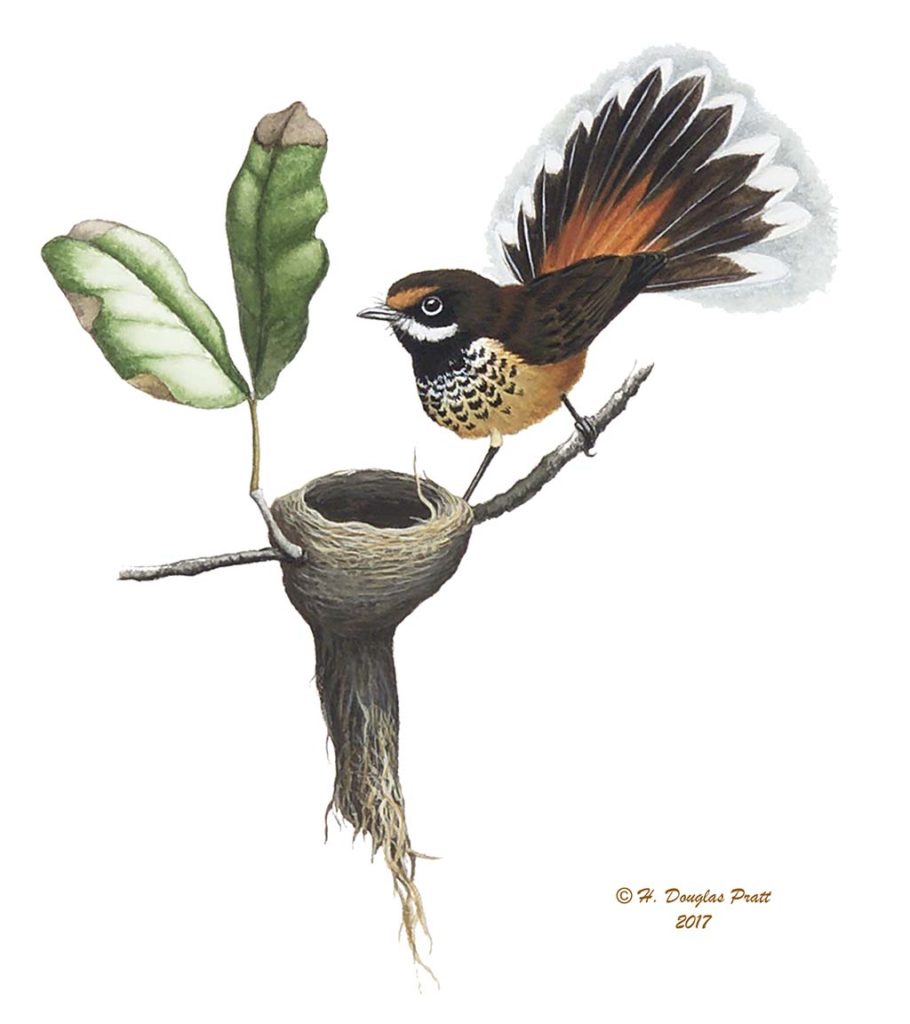The CHichirika

Scientific Name: Rhipodura rufifrons uraniae (Family RHIPIDURIDAE)
Common Name: Rufous-fronted Fantail
CHamoru Name: CHichirika/Naabak
Audio sample of the CHichirika/Naabak
Habitats and Natural History: Limestone forest understory is their home. Pairs of fantails produce two nests of young a year. The nests, composed of grass and leaves glued together with spider webs, are found in trees about 10 feet off the ground.
Description: A tiny (six inches or 15 centimeters) brown bird with a long tail the Rufous-fronted Fantail gets it name from the bright rusty/red/brown (rufous) colored feathers on the lower back and base of the tail. They have a rusty forehead and a black spotted breast. It feeds on small insects which it actively chases on the wing, a behavior called hawking.
Range: The Rufous-fronted Fantail is widely distributed from the Marianas Islands to Australia. In Micronesia there are four distinct subspecies which occur separately on Yap; Guam; Saipan, Tinian and Agiguan in the Northern Marianas.
Current Status: The chichirika is often mistaken for the Eurasian tree sparrow (gå’ga’ påle’). The real chichirika is the rufous fantail. The endemic Guam subspecies of chichirika is now extinct. It was last seen around 1984. Other subspecies of the chichirika live in the wild in the CNMI where it is called na’abak.
Threats: The major threats to the Rufous-fronted fantail are habitat destruction and predation by the brown treesnake.
